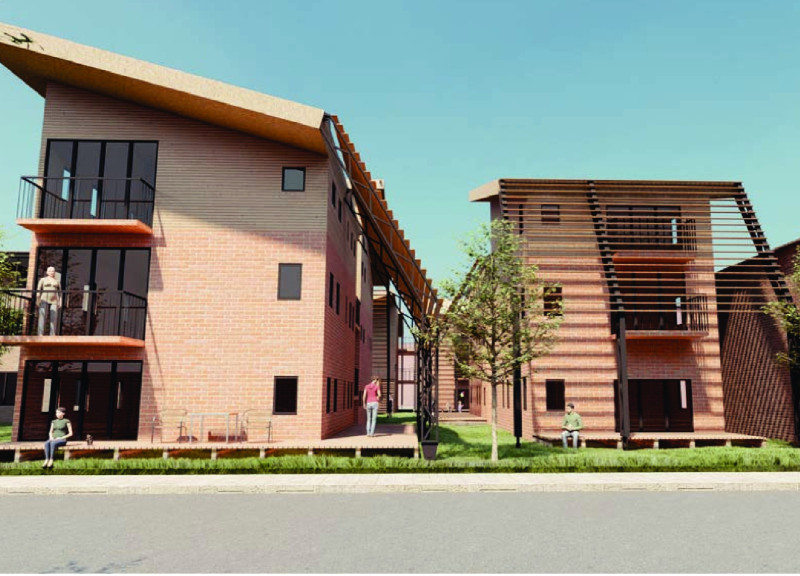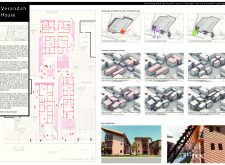5 key facts about this project
Located in Hanover Street near the Melbourne Museum, the design focuses on retrofitting existing six-pack units, which are a common form of housing in Australia due to their cost-effectiveness and straightforward construction. The concept aims to enhance living quality while reducing waste and energy use that comes with new development. Instead of building anew, the approach is to adapt and repurpose what is already there.
Verandah Integration
The verandah plays a key role in the design, serving as both a social space and a connection between indoor and outdoor living. This outdoor area is designed to maximize sunlight exposure according to the angle of the winter sun. This not only improves environmental performance but also enhances comfort for residents. By integrating a familiar architectural element, the design acknowledges the cultural significance of verandahs in Australian homes.
Upper-Level Expansion
An important aspect is the addition of a lightweight structural system to create an upper floor. This extension increases living space while considering the limitations set by the existing brick shear wall construction. The design remains user-friendly and maintains structural integrity. The upper level also includes balconies, which provide residents with private outdoor areas, promoting a greater sense of openness.
Community Activation
The design encourages community interaction by incorporating shared laundry and pantry spaces. These communal areas are placed strategically to promote social engagement among residents. By focusing on shared facilities, the layout fosters a sense of belonging and enhances the living experience, encouraging neighbors to connect and collaborate.
Landscaping Elements
Landscaping is thoughtfully implemented to blend the buildings with their surroundings. Raised platforms and outdoor areas create varied experiences within the residential complex, creating a dialogue between private and communal spaces. This design choice enhances the visual appeal while promoting ecological interaction, bringing green elements into a densely populated urban setting.



















































